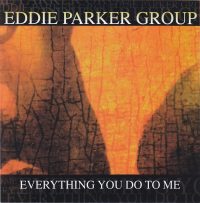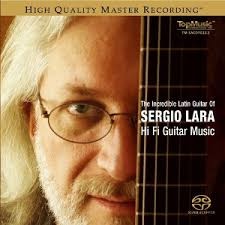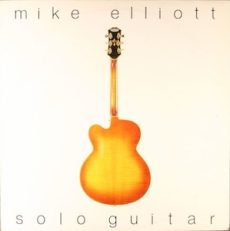
Daily Dose Of Jazz…
Alfred Viola was born on June 16, 1919 in Brooklyn, New York and grew up in an Italian family. He learned to play the guitar and mandolin as a teenager. Enlisting in the Army during World War II and played in an Army jazz band from 1942 to 1945.
He started a trio with pianist Page Cavanaugh and bassist Lloyd Pratt. The band appeared in several films, including Romance on the High Seas with Doris Day, and played a few dates in 1946 and 1947 with Frank Sinatra. Viola continued to work with Sinatra regularly, accompanying him on several hundred studio recordings and concert dates between 1956 and 1980.
Viola was a session musician in Los Angeles, California performing in films and television. His mandolin playing can be heard on the soundtrack of The Godfather. Other credits include West Side Story and Who’s Afraid of Virginia Woolf? He continued playing jazz as well, with Bobby Troup, Ray Anthony, Harry James, Buddy Collette, Stan Kenton, Gerald Wilson and Terry Gibbs.
He worked as a session musician on over 500 albums, including releases by Natalie Cole, Neil Diamond, Marvin Gaye, Julie London, Steve Lawrence, Linda Ronstadt, Jimmy Witherspoon, Helen Humes, June Christy, Ella Fitzgerald, Anita O’Day, Nelson Riddle, and Joe Williams.
Viola and Cavanaugh reunited in the 1980s with Phil Mallory and continued to play regularly in Los Angeles until the late 1990s.
Guitarist Al Viola, recorded ten albums as a leader, died of cancer on February 21, 2007 at the age of 87 in Los Angeles.
More Posts: bandleader,guitar,history,instrumental,music

Daily Dose Of Jazz…
Benjamin David Goodman was born on May 30, 1909 in Chicago, Illinois and was the ninth of twelve children born to poor Jewish emigrants from the Russian Empire. Growing up in the slums of the Maxwell Street neighborhood, his father would take him to free band concerts in a nearby park. When he was ten his father enrolled him and two of brothers in free music lessons at the synagogue, in addition he received lessons from clarinetist Franz Schoepp of the Chicago Symphony Orchestra. He went on to join a boy’s club band and by the time he turned thirteen he got his first union card,
He made his professional debut in 1921 at the Central Park Theater on the West Side of Chicago. He entered Harrison Technical High School in Chicago in 1922 and with card in tow Benny worked in a band featuring Bix Beiderbecke. Two years later, in 1926, he joined the Ben Pollack Orchestra and made his first recordings. Moving to New York City he became a session musician for radio, Broadway musicals, and in studios. In addition to clarinet, he sometimes played alto and baritone saxophones.
The Thirties saw him charting for the first time with He’s Not Worth Your Tears. He would go on to have top ten hits and from 1936 until the mid-1940s, with arrangements written during the Depression by Fletcher Henderson. Goodman hired Henderson’s musicians to teach his musicians how to play the music. He went on to lead one of the most popular swing big bands in the United States. His bands started the careers of many jazz musicians. During an era of racial segregation, he led one of the first integrated jazz groups, his trio and quartet.
Clarinetist Benny Goodman, while pursuing an interest in classical music, continued performing until the end of his life on June 13, 1986 in New York City.
More Posts: bandleader,clarinet,history,instrumental,jazz,music,saxophone

Daily Dose Of Jazz…
Eddie Parker May 28, 1959 in Liverpool, England. A founding member of and composer for the British jazz band Loose Tubes in the 1980s. He has toured and performed with several noted bands and performers including Bheki Mseleku, Marvin Smith and John Parricelli. He has toured with the band Mister Vertigo, of which Parricelli is also a member, and conducts jazz workshops and performances involving young musicians. He was a lecturer in jazz at Middlesex University, where his students included Led Bib.
As a leader he has recorded three albums, a half doen with Loose Tubes and as a sideman he has recorded eight with Django Bates, A Man Called Adam, Keziah Jones, Oumou Sangare, Trevor Walters, and Mseleku.
Flutist and composer Eddie Parker continues to play keyboards during workshops and live performances.
More Posts: composer,flute,history,instrumental,jazz,keyboard,music

Daily Dose Of Jazz…
Sergio Lara was born on May 21, 1959 in Mexico City, Mexico and started playing guitar at age nine. Very early he discovered and began studying several musical styles with his greatest influences being John McLaughlin, Jorge Strunz, Paco de Lucia, Tony Rice, Norman Blake, Sam Bush and David Grisman, among others.
Lara appeared on the international music scene in 1983 with the release of his first solo album titled Sergiology. During the following years he formed his own band, New Acoustic Unit, in Nashville, Tennessee and San Antonio, Texas. In 1994 he released a sophomore album Guitarras Hermanas, the first one for Higher Octave Music. This album of all original music, also included a new instrumental version of the very popular and romantic song Sabor a Mi.
1996 saw Sergio releasing his next product titled Two Guitars-One Passion, which received worldwide attention because of its original combination of different musical styles. Throughout the balance of the 1990s he recorded two more albums with instrumental versions of classic songs and his original compositions.
Omn the new millennium he continued to record albums for his new independent label Fusion Acustica Music. With a career that covers many years and more than ten albums under his name, he has shared the stage with Al Di Meola, Larry Carlton, Bireli Lagrene, Dr. John, Craig Chaquico, Joe Sample, Strunz & Farah, Bela Fleck, Sam Bush, Paquito D’Rivera, Julio Iglesias and Ray Charles.
Guitarist Sergio Lara continues to explore new possibilities inside the world of contemporary instrumental music and sharing improvisation.
More Posts: bandleader,guitar,history,instrumental,jazz,music

Daily Dose Of Jazz…
Mike Elliott was born on May 18, 1940 in Chicago, Illinois to a studio musician father and a blues singer mother. Raised in Colorado he learned guitar at a young age and was playing professionally by the time he was sixteen. It was in Colorado where he studied guitar with Johnny Smith.
He formed his first jazz group and in 1964 was on the road. He moved to Minneapolis, Minnesota two years later, and in the Seventies he helped found the jazz fusion group Natural Life, which included saxophonist Bob Rockwell, bassist Billy Peterson, pianist Bobby Peterson, and drummers Bill Berg and Eric Kamau Gravatt.
The 1980s saw him moving to Nashville, Tennessee and becoming manager of Gibson Professional Musical Services and holding clinics with Les Paul, Howard Roberts, and Elliot Easton. Mike did session work, engineering, producing, arranging, and songwriting. In the middle of the decade he teamed up with songwriter musician Jim Pasquale to form Magic Tracks Recording Studio.
Remaining in Nashville until 1998 he worked with Johnny Cash, Mickey Newbury, Chubby Checker, Emmylou Harris, Trisha Yearwood, Joe Diffie, Earl Klugh, Vic Damone, Steve Earle, Crystal Gayle, and Tennessee Ernie Ford.
Gruitarist Mike Elliott died on September 14, 2005. A Mike Elliott Scholarship Award for excellence in guitar was established in his honor.
More Posts: bandleader,guitar,history,instrumental,jazz,music



